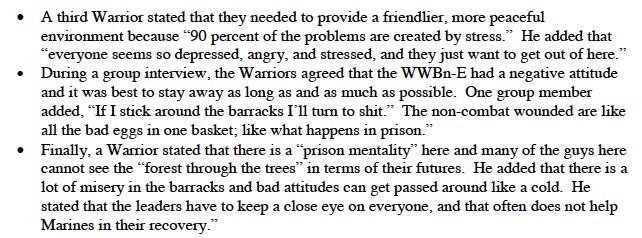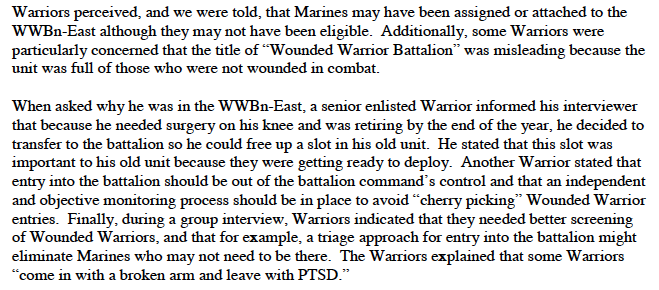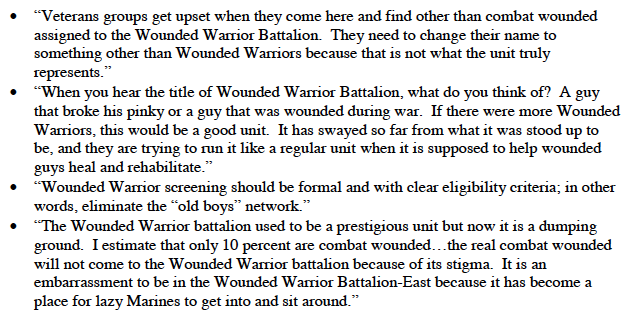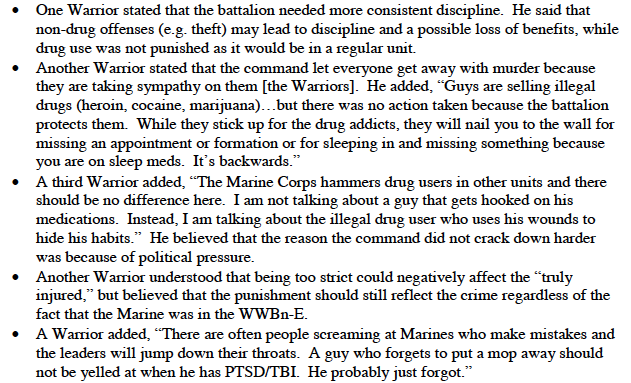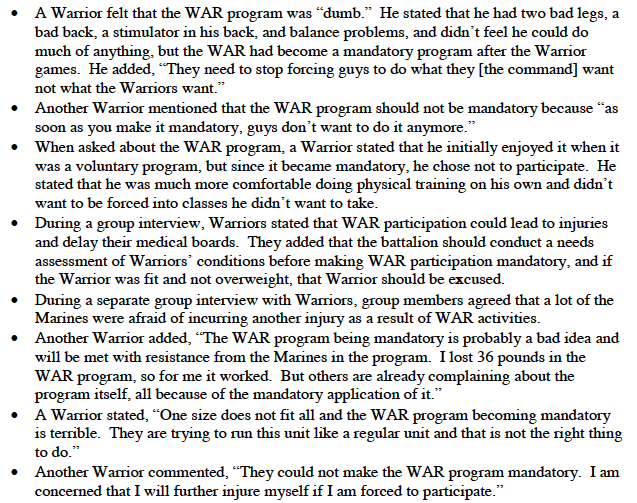Marines from the Wounded Warrior Battalion at Camp Lejeune, N.C., participate in the Pentagon's 2010 Wilderness Challenge adventure race.
Seven-hundred and thirty days. That’s the average length of time – two years – that a wounded Marine spends at Camp Lejeune’s Wounded Warrior Battalion before leaving the corps. If you think two years as a patient is too long for hard-charging, war-fighting Marines, you’re right.
A new, grim Pentagon inspector general’s report looks beyond the bunting and back slaps. Instead, it focuses on the challenges of readying wounded (or sometimes merely injured or ailing) Marines back into the civilian world. It’s not a pretty sight: pain, boredom, anger, drugs, frustration and paperwork fill their days. It’s important to pay attention to these kinds of things precisely because they tend to occur BVR — beyond (our own) visual range.
What follows are some excerpts from the 118-page report (among the less-common acronyms used are MEB (Medical Evaluation Board), MTF (Military Treatment Facility), PEB (Physical Evaluation Board), PEBLO (Physical Evaluation Board Liaison Officer), RCC (Recovery Care Coordinator), WAR (Warrior Athlete Reconditioning), and WWBn-East (Wounded Warrior Battalion-East, the outpost at Camp Lejeune, N.C., that is the subject of most of the report). While the IG gives the caregivers generally good marks, there’s only so much they can do, given their shortages of funding — and their Marines’ surpluses of time:























